Supporting digital teaching and learning with media
Policy Recommendations Report for European Higher Education


Policy Recommendations Report for European Higher Education

Policy Recommendations Report for European Higher Education
Authors:
Sally Reynolds & Dovile Dudenaite with the support and input of all TransACTION! partners September 2024
Funded by the European Union. Views and opinions expressed are however those of the author(s) only and do not necessarily reflect those of the European Union or the European Education and Culture Executive Agency (EACEA). Neither the European Union nor EACEA can be held responsible for them.
CC-BY-SA 4.0 international
This document reports on an investigation carried out by the TransACTION! project partners into the operational practices and concerns of educational media producers and integrators in higher education institutions (HEIs). It brings together what we have learned and assimilates it into a set of recommendations aimed at both those working in the sector as well as those policy and decision makers responsible for such services within higher education institutes (HEIs). It has been produced and disseminated in the final 6 months of the project lifetime.
This report is written against the backdrop of considerable change in the European higher education sector. Such change is driven by several factors. These include the drive towards a greater take-up and use of digital technologies including advances in audiovisual services. At the same time, many higher education institutions are facing considerable challenges in terms of diminishing resources which is often having a negative impact on the operation of those services responsible for promoting and integrating multimedia into the learning offer.
The four partners who have contributed to the report are all support providers in their respective universities in Spain, Germany, The Netherlands and Belgium and while they have much in common, they are all structured and operate in different ways. However, taken together, we are confident that they provide a good representative sample of many such centres and therefore the contexts they describe and the challenges they face, are common to many centres which includes centres for teaching and learning, audiovisual centres, learning innovation centres, course design and development services, etc.
Much of our report is taken up with a description of how these centres operate and the aspects of good practice that they portray. They share a common belief in the
importance of good communication and the promotion of a co-creative process with academic teaching staff. They offer a significant number of different formats while always espousing the importance of ensuring the pedagogical value over any other factor in their choice of technology or technique.
The main takeaway from our report is a set of recommendations emerging from this investigative process. These recommendations are aimed at those responsible for the operation of such centres as well as policy- and decision-makers who play a role in the overall operation of such centres within their respective HEIs.
When it comes to the structure and operation of units responsible for educational media production and integration, we recommend direct contact with academic teaching staff as much as possible, the promotion of an agile approach to production as well as fostering a spirit of interdisciplinarity whenever possible. We also recommend the avoidance of too much change in the direction, structure and objectives of centres along with good planning, adequate resources and representation of senior staff in relevant institutional decision-making structures.
In terms of design approach and format options, we recommend an expansion in support to DIY, adoption of a co-creation approach where possible, a critical but open approach to AI developments and a more structured approach to the involvement of students.
Finally, to maximise the impact and value of educational media production, we recommend that new teaching staff should be encouraged to include more multimedia given the demands of students nowadays. Furthermore, centres should be far more engaged in carrying out research into the pedagogical effectiveness of their outputs than currently is the case.
University teaching across Europe is going through something of a crisis. On the one hand, the gradual shift to a more learner-centred approach has been underway for several decades. The emergence of the open universities more than 60 years ago, had already led many universities to consider how they might make learning more open and accessible to all manner of learners. Students began to expect more meaningful learning opportunities, and educational media, largely in the form of linear video, began to become more common and to take its place in the story of learning innovation. Then we witnessed the MOOC movment which gave a significant push to the notion of open learning along with a growing interest in new approaches like flipping the classroom, learning by doing and a far greater focus on finding ways to engage, motivate and excite students.
Then along came the Covid Pandemic in 2020, and the pace of change to a more technology supported approach went into overdrive practically overnight. This extraordinary set of circumstance had many positive impacts with the speedy adoption of online learning often accompanied by rapidly produced resources and multimedia support. However, for many, the impact was somewhat negative, resulting in frustration and a longing for the old ways of formal in-person teaching and learning with the academic fully in charge. Some people even go so far as to say that the provision of ‘emergency remote teaching’ had the effect of damaging the great progress that had been made towards more innovative styles of learning that had taken place in the previous sixty years.
The crisis currently experienced by many Higher Education Institutions (HEIs) is to decide whether or not they can, and should, push forward with innovating their learning offer through an increasing engagement with new technologies and approaches or whether they should protect their increasingly dwindling budgets for what they see as the core purpose and mission of their institution, with a clear focus on research often over-shadowing their commitments to teaching.
What about the impact of this crisis on the people and services that are targeted in our TransACTION! project?
Namely those university lecturers and teaching staff, as well as technical and support staff, educational technologists, innovation specialists, instructional designers, audiovisual staff and others in universities involved in multimedia
design and production. On the one hand, these people are actively pursuing new and better ways to use multimedia to enhance the learning process and at the same time they are battling the cross-winds of changing priorities, dwindling resources and scepticism when it come to the value of technology generally in the higher education learning context.
This report, written towards the end of the project’s lifetime, aims to gather what we have learned throughout the project and assimilate it into a set of recommendations that we hope those working in the sector, as well as those policy and decision makers responsible for such services within the higher education sector, will find useful. It aims to highlight the work of those working in teaching and learning support and service centres of different types and includes what we often refer to as ‘Third Space’ staff, i.e. those learning designers, educational media producers and higher education teaching experts working in HEIs whose job it is to support academic staff in their use of media to enhance their academic teaching and research work.
The TransACTION! project began in January 2022 when emergency remote teaching was still very much the norm. It was set up to investigate and explore the best way to deliver pedagogically effective, media-based teaching and learning. The project was based on several objectives, namely;
• Supporting digital capabilities of the higher education sector;
• Stimulating innovative learning and teaching practices in higher education enhanced by high quality and scalable learning media;
• Digital transformation through the development of digital readiness, resilience, and capacity;
• Sharing and reuse of good quality media resources and online teaching practices in higher education.
TransACTION! has been meeting these objectives in practical terms through its creation and sharing of a research-based framework for enhancing and promoting multimedia learning design, an open online course on media-supported learning, a hub including resources, educational offers, and materials, training units on multimedia learning design as well as recommendations and strategies for promoting media-supported teaching and learning in the framework of higher education. This report and its accompanying visuals and dissemination materials is the recommendations report and so is an integral part of the project outcome.
The TransACTION! consortium is made up of five partners, led by the Friedrich-Alexander-University ErlangenNuremberg, Germany. The other four partners are: Wageningen University and Research, The Netherlands; KU Leuven, Belgium; Universitat Politècnica de València, Spain and the Media & Learning Association, Belgium. Four of the partners are traditional universities with a long history of promoting innovative learning practice supported by multimedia in Europe and beyond. The Media & Learning Association (MLA) is a not-for-profit member association working on the themes of media in education, media education and media literacy for more than 14 years. It currently works with 92 members in 24 countries, mostly in Europe.
The four university partners are represented in this project by their educational media support provider, a short description of each of these centres is available starting on page 9. As the reader will note, they each operate in a somewhat different structure, however they share a significant number of features and operational practices as will become apparent in the following chapters. Several of the partners know each other from previous collaborative activities and all are currently active members of MLA which provides them with further opportunities to exchange and collaborate, as well as offering them a significant overview and general understanding of the educational media production sector in higher education in Europe.
The position of the work being carried out in TransACTION! can be placed clearly in context by reference to the European Union‘s Digital Education Action Plan (2021–2027). Our work addresses both main priorities of the plan namely Fostering the development of a high-performing digital education ecosystem and Enhancing digital skills and competences for the digital transformation. The project is doing this by furthering the take-up and exploitation of digital services and resources in higher education with a specific reference to educational multimedia. We aim to provide the ways and means to improve the work of the centres and to support providers within higher education to ensure:
• Enhanced student engagement and learning outcomes
• Broader access to educational opportunities
• Increased flexibility and personalisation in learning
The work of the centres and support providers targeted can be challenging as they grapple with a rapidly changing landscape and dwindling resources. The aim of this report has been to investigate these challenges to better understand how they might be overcome. This report also serves to highlight best-practice and to better understand how they work and what they do to ensure the best possible outcomes of their work.
This report also serves to identify recommendations from which others can learn and which can be used by the sector to pinpoint areas for improvement. Some of the recommendations are aimed directly at other centres and support providers operating is a similar space while others are aimed more at decision-makers and those responsible for policy in an effort to influence their decision-making in respect to educational multimedia production in higher education.
The methodology for the production of this report was both qualitative and quantitative. MLA, the partner with responsibility for producing this project result, began by circulating an outline of the report based on its description in the project proposal to all partners for their input and eventual approval.
Once this was done and the outline agreed, MLA set up a short online questionnaire to gather basic factual information from each partner which were all completed in June 2024. Soon after, MLA set up opportunities for separate structured interviews with representatives from each partner, all of which took place in July 2024. For some partners, these interviews were carried out with just one representative from the partner, while for others, it was with several. On the side of MLA, the inter-views were led by Sally Reynolds and Dovile Dudenaite. These hour-long
interviews were recorded and transcribed using a simple transcription service. Later they were analysed to identify trends and common themes to provide the final collated version provided here.
A draft of this report was then circulated to the partnership and discussed in person at the next available in-person project meeting which took place in Erlangen, Germany in September 2024. The final version was then produced and prepared for as wide a circulation as possible. In order to expediate promotion, a separate short document has also been produced based on the recommendations emerging from our work. The main findings and recommendations emerging from the report were also distilled into a position paper that was submitted to the European Commission as part of the 2024 Review of the Digital Education Action Plan by MLA.
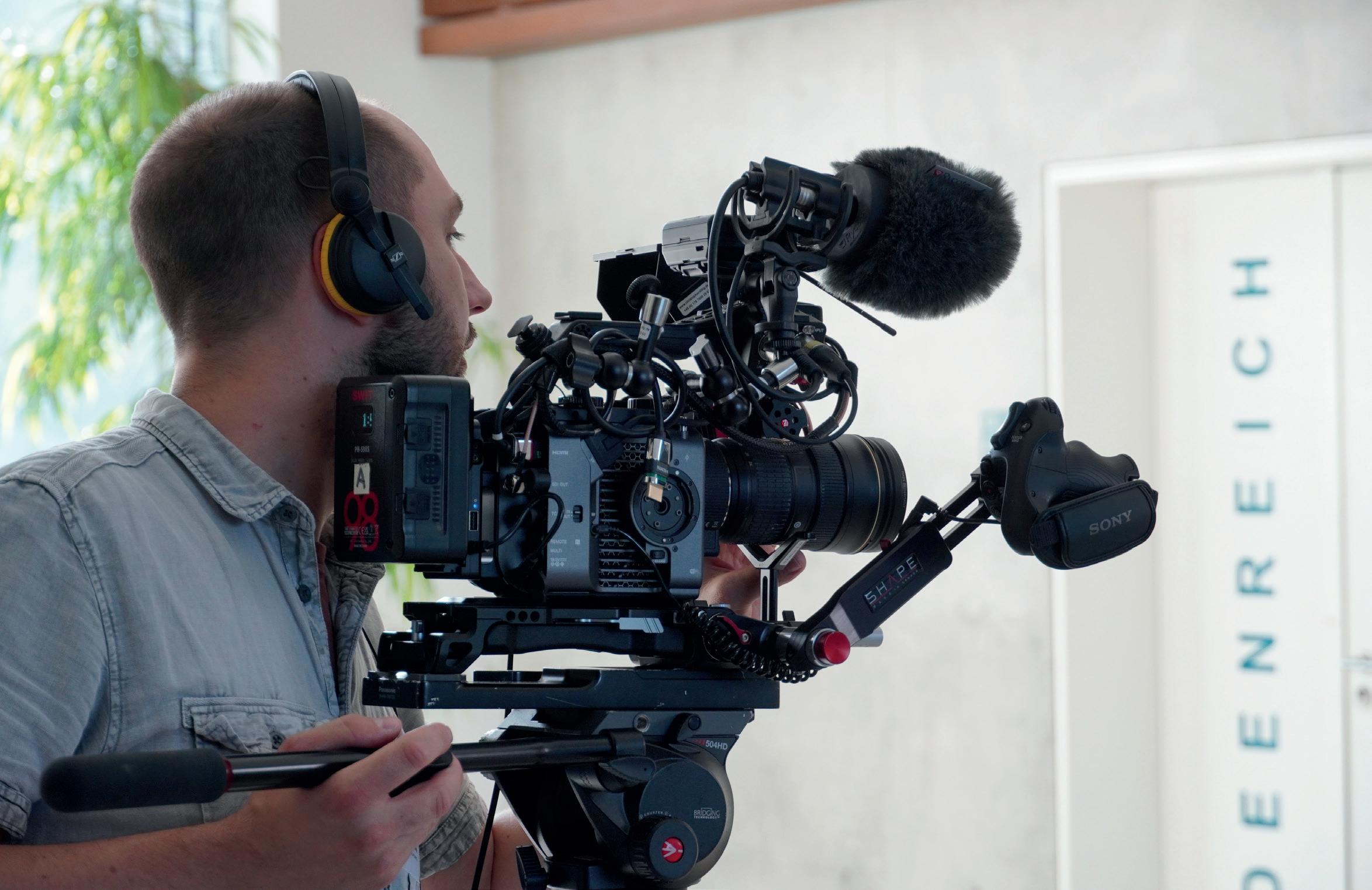
To better understand the context of our work, we provide a description of each of the partners involved in the project who have contributed to this report. The following table provides some basic information about the centres involved and is followed by a short description of each. As
University Partner Friedrich-AlexanderUniversity Erlangen-Nuremberg (FAU)
you can see, these centres are all very different and reflect well, we believe, the wider context of our work. In the textual descriptions, we have tried to provide a short description of the way in which each works and some of the specificities that apply in their context.
Wageningen University and Research (WUR)
Universitat Politécnica de Valéncia (UPV)
KU Leuven (KU Leuven)
Year founded 1743 1876 1968 1625
teaching staff
Department/unit/ support provider involved in project
Innovation in Learning Institute Educational Media, part of Teaching and Learning Centre
Media Unit, part of IT services
The Media and Course Creation Services, part of the Teaching and Learning services dept and the Leuven Learning Lab network
FTE 20 13 8 21
Staff profiles 8-10 with an instructional design pro-file, people with a stronger research and teaching profile and with a more technical background
2 researchers, 4 technologists and 7 technicians
6 in media services and 2 in MOOC production 15 in media services and 6 in course design
Dedicated web page https://www.ili.fau. de/en/ https://esd.crs.wur.nl/ https://media.upv.es
https://www.kuleuven. be/english/education/ teaching-and-learningservices/limel/limel
FAU has had a department dedicated to supporting teaching and learning in the university since 1975, the Innovation in Learning Institute (ILI) was formally established to take this work forward in 2007. ILI works as a centralised unit for digital teaching and learning in FAU as well as having a specific affiliation with the Faculty of Humanities for several projects. As well as having a manager, ILI’s research activities are supported directly through the involvement of a Professor from the Faculty of Humanities who is Chair of Pedagogy, focusing on digitisation in higher and adult education. The position of ILI is currently under consideration within the overall university structure and there are some changes foreseen
in the future which will involve its amalgamation with a smaller department focused more generically on teaching and learning. ILI also works closely with the department responsible for lecture recording and the university’s LMS.
FAU/ILI focuses largely on the production of linear educational video and estimate that they are responsible for about 300 productions per year. These vary from short clips to longer video recordings involving several different forms of educational multimedia. To date they have not done very much in terms of either podcasts or immersive learning although they are doing some 360° recordings.
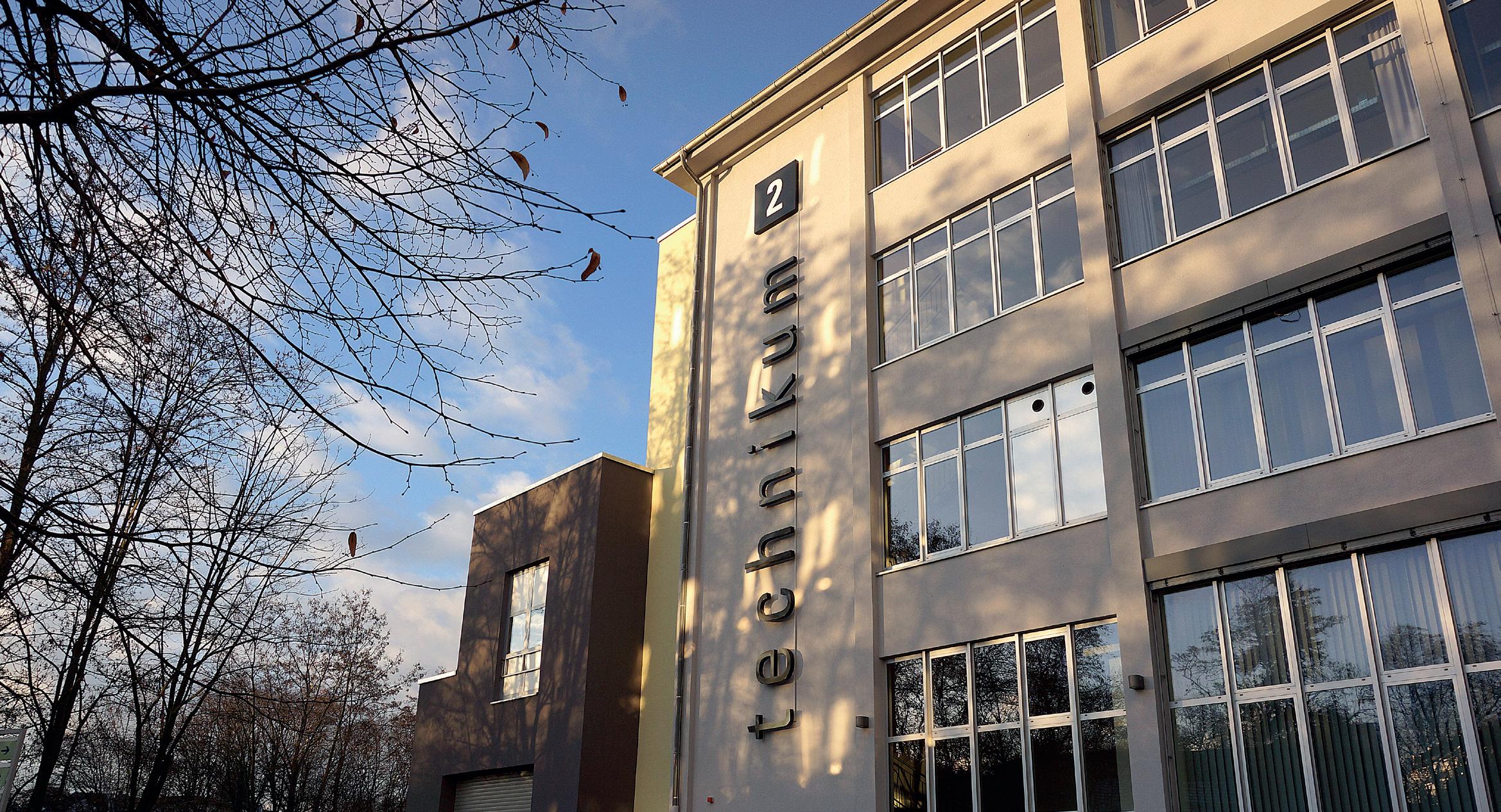

The team at ILI are currently waiting for support to build a suitable studio for immersive recordings to add to their current facilities which include one small studio. They fully support DIY recordings and lend equipment for this purpose.
FAU/ILI’s annual budget mostly supports the provision of advice for DIY and consultancy and most faculties have to come up with their own funding to pay FAU/ILI for their productions. When they do have a budget, it is often used to pay for student production assistance.
FAU/ILI is a leading member of the Bavarian Virtual University (Virtuelle Hochschule Bayern/VHB) which includes about 40 HEIs in the region and they produce a significant amount of video materials for courses in VHB. Funding for multimedia production is available to lecturers who want to produce courses for VHB with the support of
ILI. FAU/ILI also develops a small amount of material for the German digitalisation platform as well as several Swiss and Austrian initiatives.
Most requests for media production support within FAU come directly to ILI often related to their role in supporting the University’s LMS. While they often start from some broadly agreed concepts, the development process is highly iterative. ILI does use some storyboard templates and often works with examples to move the process forward with teaching staff. MOOCs continue to be important for the unit and they operate as far as possible on an open access basis.
To date, FAU/ILI has not been involved in a significant evaluation of their outputs which are generally evaluated at course level.

The Educational Media team is part of the Teaching and Learning Centre (TLC) in WUR which began as the Education Support Centre in 2017. TLC now has a much stronger emphasis on didactics and infrastructure rather than being simply a support centre as it was in the past. It is a centralised service supporting one main campus as well as a remote campus in Amsterdam. It also supports training programs located around the world, but this is only a small part of their work. WUR only has one faculty which is made up of 5 different so called “Chair Groups”. These function like faculties and the EM Dept supports all 5.
The EM team facilities include 5 studios, 2 collaborative spaces, 1 innovation space (teaching classroom fitted with newer, typically in-person instructional technologies) and they also support podcasting. There are some localised support centres in several of the Chair Groups but they are much smaller and don’t have the same resources.
The EM team is one of 6 teams working in the TLC which employs about 80 FTE in total. Each team is domain based, one supports digital exams, another the online learning environment, and another broad curriculum development, either at course or programme level. Most of their work

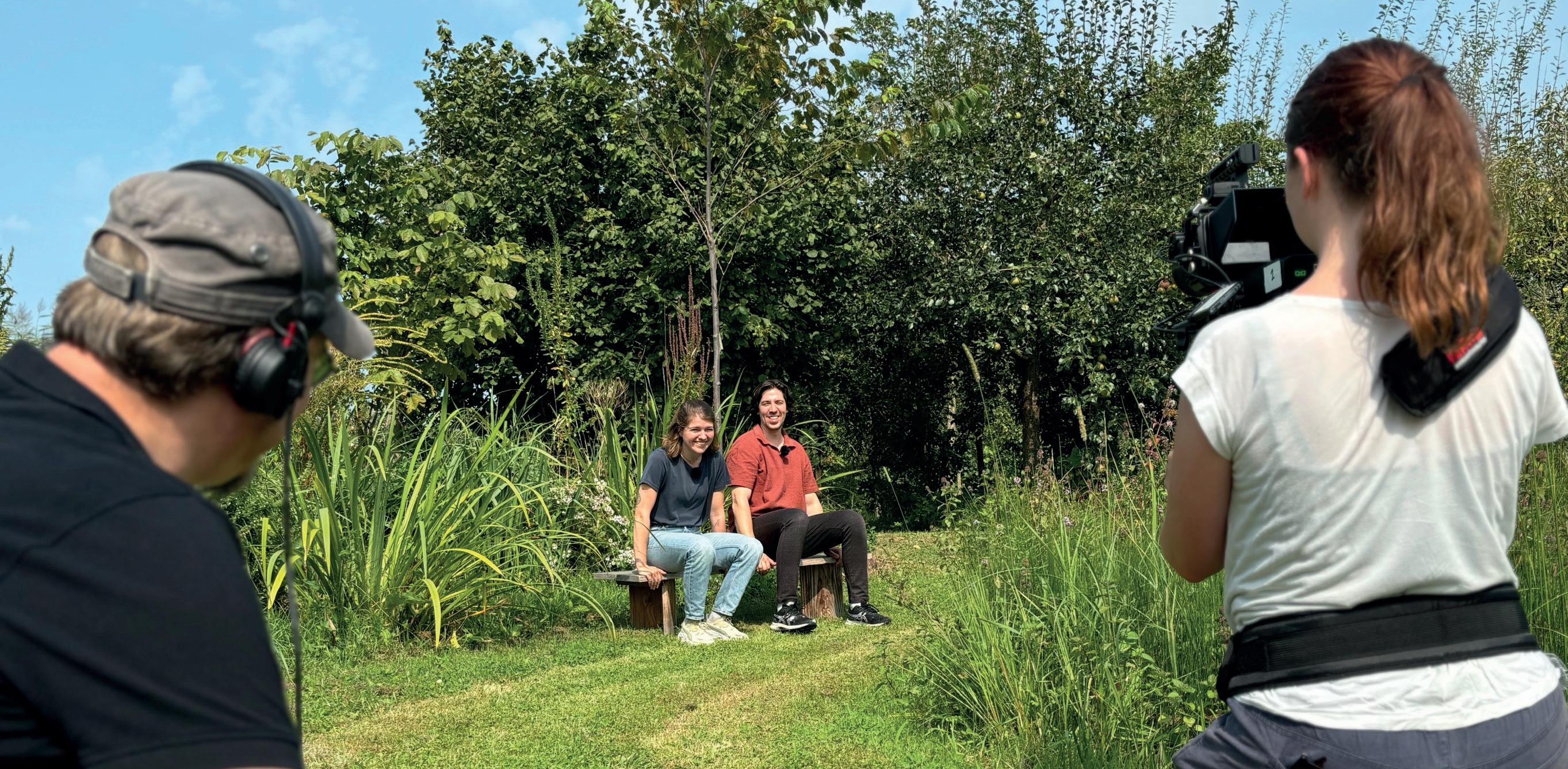
is internal nowadays. The balance of profiles across the teams varies but includes a substantial number of people with didactical know-how and experience, along with people coming more from the technical side.
In terms of productions per year, EM supports over 10,000 live event captures, 300 studio productions and about 25 customised productions. They support the production of videos (knowledge clips), podcasts, 360° videos, interactive graphics/packages such as H5P assets, animations, screencast tutorials, lecture capture, virtual tours and live event broadcasts. In general, the team works more with support staff in the different chair groups rather than directly with academic teaching staff. They are not
responsible for formative assessment using media, this is done by a different dept.
Approximately 75% of the time they work for free for the Chair Groups as their work is centrally funded, however for about 25% of the time they work for the research side of WUR and these cases are funded through clients. EM also does a small amount of external project work funded by the Dutch government.
EM provides specific training for academics on producing podcasts and knowledge clips which they consider an important part of their work as it allows them to introduce educators to various use cases for educational media and serves as a pipeline for their co-creation services.
The Media Unit is part of the IT services of Universitat Politecnica de Valencia called the Área de Sistemas de Información y Comunicaciones (Information and Communications Systems area). Most of the staff working in the department have a technical background which serves the entire university, primarily the 2600 teaching and other staff members.
The Media Unit was set up about 15 years ago and provides studios and production spaces as well as a consulting service. They have a dedicated webspace and a YouTube channel. Each year, the unit produces approximately 21,000 videos from lecture recordings and 7,000 studio and other videos. The main types of productions supported by the department are studio recordings, lecture recordings and podcasts.
UPV/MU deals specifically with educational media for UPV and is made up mainly of video specialists and technicians, however they work with instructional designers from other units when dealing with specific course production tasks. UPV has teaching and learning units as part of the faculty structure with which MU works as and when necessary although these operate often in quite a traditional manner without a great deal of multimedia development.
Educational video production is offered free to the faculties. If the videos produced are to be used outside the scope of the university, then the production service needs to be paid for – this only occurs rarely. The unit offers quite a specific set of services which, more or less, matches the demands that exist for these services.
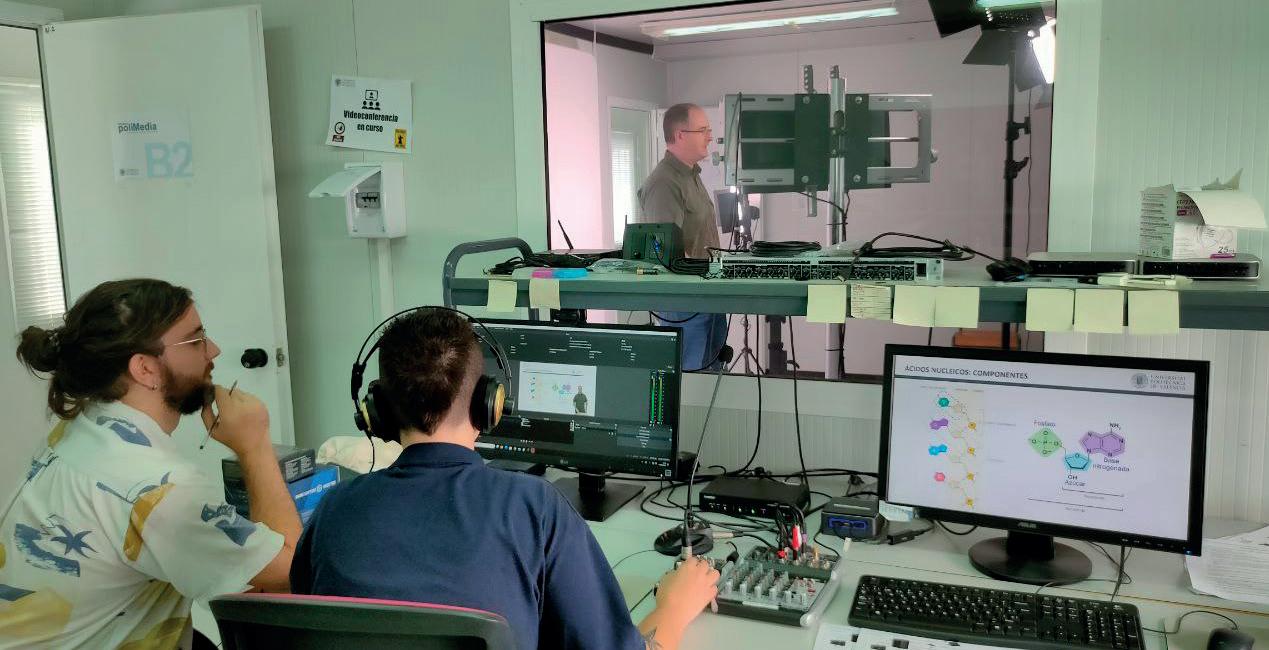

Most of the services that they offer are in-studio based as they have limited resources for production work outside their studio facilities.
The Media Unit uses OpenCast, an open source video management service. The intake practice is driven from two sources. First from academics themselves and the second comes from the university as a whole in its drive to adopt more video generally across the university. UPV operates a points system to motivate teaching staff to improve their teaching and one of the ways faculties and teaching staff can gain points for their courses is by producing video content. MU is part of a commission that decides on suitable production opportunities and allocates appropriate resources accordingly under this points system.
MU also runs training courses for teaching staff. When a faculty member first comes to the unit, they are assigned an instructional designer with whom they can work. The unit uses templates and examples where appropriate. Students are not often involved. MU also lends equipment for DIY productions and provides advice and support to such productions as and where necessary.
UPV/MU is a significant producer of MOOCS particularly aimed at the Spanish-speaking higher education market. They have lots of connections in the educational media production community in the Spanish-speaking world and also work closely with other members of the Opencast community.
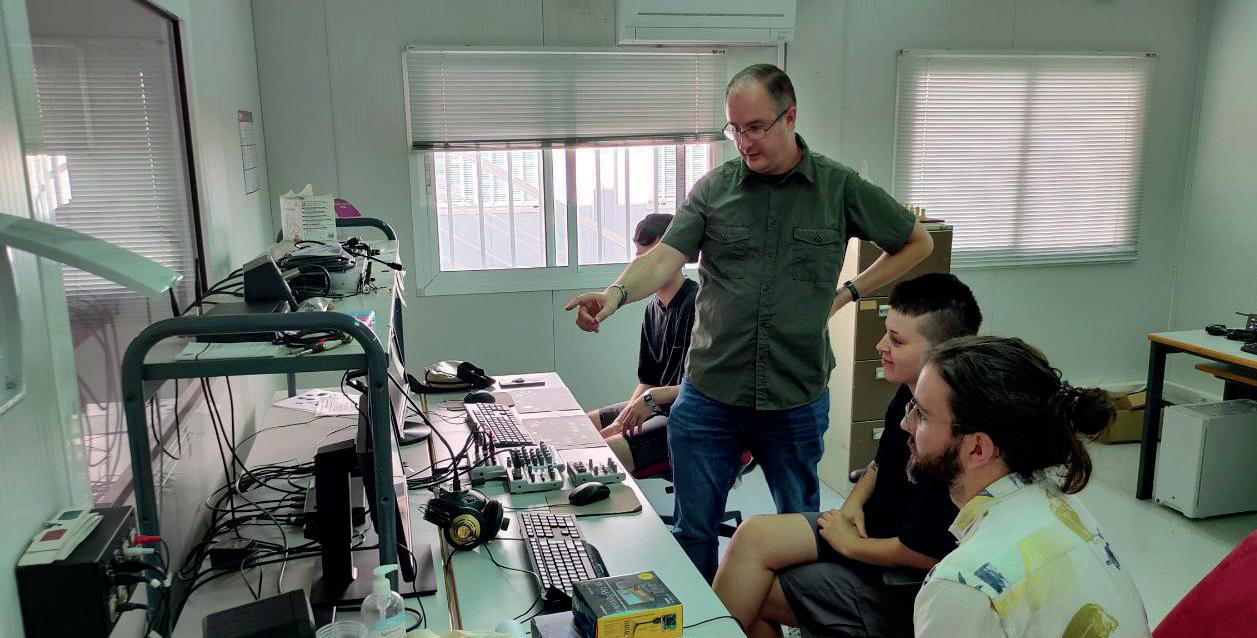
The Media and Course Creation Services are part of Teaching and Learning Services and the Leuven Learning Lab, a learning network that bundles educational expertise in several faculties and central services across the KU Leuven community. Of the 21 persons (15 FTE) working in the team, 15 are involved in the media services, as video makers, support for DIY services, production coordination and Media Asset management. The other 6 are working on course design.
As well as production support, the team also operate a lending service, and four dedicated knowledge clip studios located in two cities. All 15 KU Leuven Faculties use their services. They also operate a recording studio and a podcast studio, 2 media rooms for audio recording, advanced screencasting and video editing. The team offers a lot of staff training and operates two websites,
one offering training and support and the other an online reservation platform for the studios, media rooms and lending services.
In terms of production scale, this is difficult for the team to answer as so much of their effort goes towards supporting staff to make their own productions with the use of the team’s equipment and support. They also give every faculty a considerable budget to attract students who will help them with video production.
In terms of the types of productions they support, these include DIY video and audio production, 360° video, podcasting, advanced screencasting (Camtasia) and animation (Moovly), professional video and audio production and animation. 3D, Virtual Reality and Augmented reality production are not yet part of their offer but supported currently in the KU Leuven Biomedical
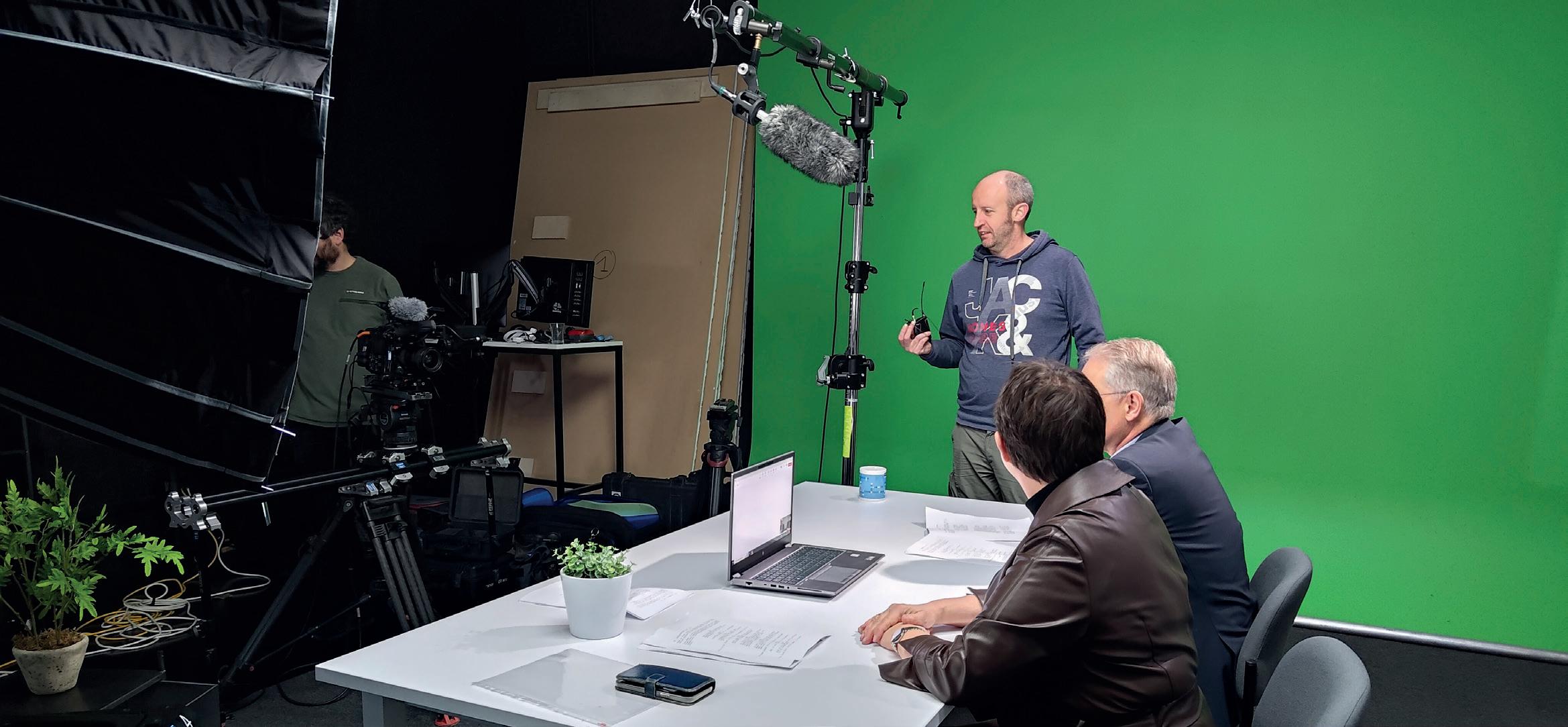

Technology Lab as well as in other faculties like the medical faculty. The team estimates that about 10% of their work is dedicated specifically to high end professional video production.
When it comes to how they operate, the team provides support at three levels, the fully DIY model, the fully professional model whereby all the production is carried out by the team and an in-between model, whereby the professional team provides just part of the production.
They work always directly and closely with the academic course developers and in this in-between model might, for example, provide support for the set-up of a recording situation as well as support with editing and recording but then they might leave the set in place for the academics to record themselves, often with student support.
The learning centre operated by the team is very active, providing a lot of training and support on group and individual basis. They are experimenting where possible with new techniques and technologies but are often hampered by lack of resources. KU Leuven has a policy and a system for storage although this doesn’t cover DIY production. They keep professional productions for an indeterminate period through their arrangements with meemoo, the Flemish educational archive service. It’s worth noting that for 360° recordings, the team recently decided to give all the rushes to the client as the storage requirements were so high.
Intake is an important step in the development process which the team try as far as possible to make into a cocreative exercise. The team focus on encouraging academic staff to plan and think in images and to be realistic in terms of the available budget. They adopt a fit-for-purpose strategy. For instance, when a talking head video is requested, they direct the academic to the DIY approach rather than a professional production. They sometimes
use templates that they already have and show lots of examples and aim to guide teaching staff from A to Z. This process has also helped the professional production team to take a much more co-creational approach to course development and educational multimedia design. They also produce a number of MOOCs each year.
The team does some internal promotion through, e.g. so-called noon sessions – informal learning opportunities for all KU Leuven staff as well as through their faculty supporters who are part of the Learning Lab network. For the future, they are considering the establishment of an open educational resources library.
The team see themselves as translators, making the production process as easy as they can while at the same time, thoroughly investing in refining the place of video in education, making it more ‘learningful’. Accessibility is a formal consideration, but not monitored, and it is promoted largely insofar as it is a support to sustainability. Transcripts are provided along with some guidelines but the extent to which a production is made accessible is left up to the producer to decide.
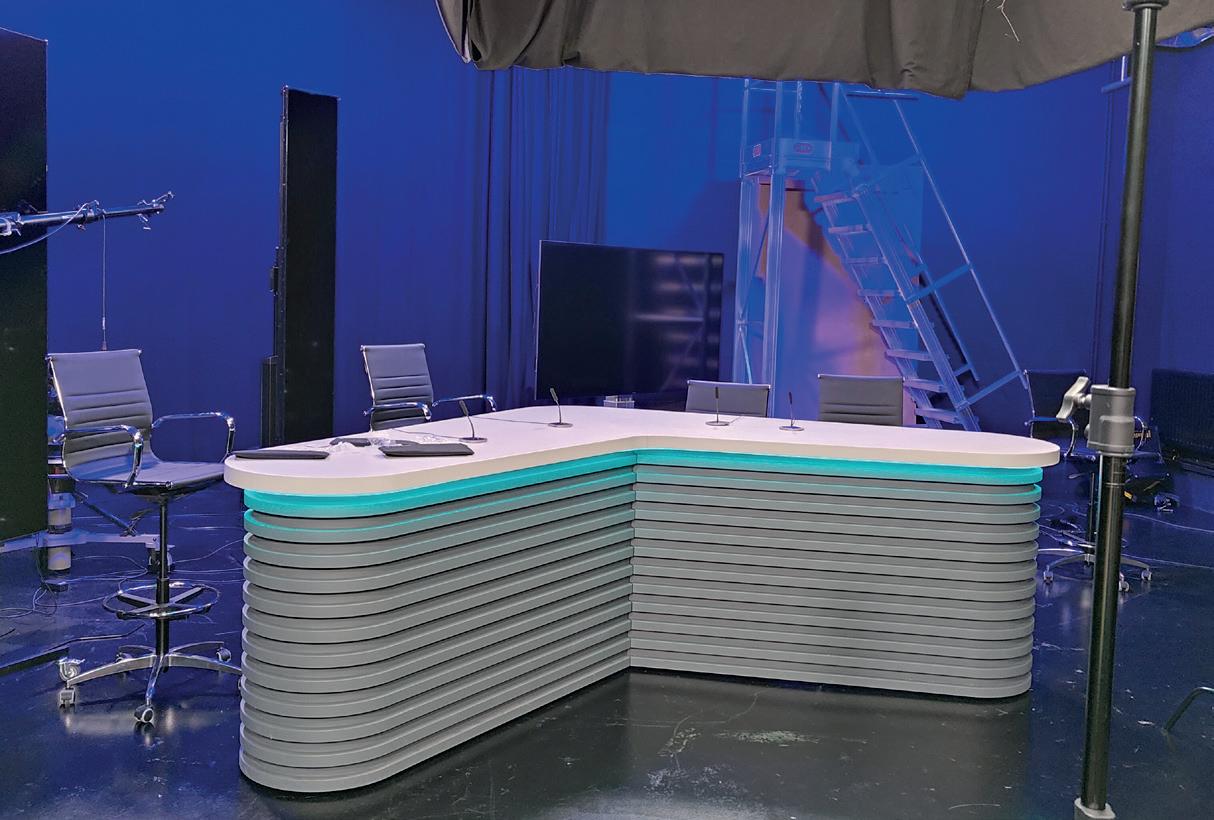
The TransACTION! partners have dedicated significant effort over the lifetime of the project to identify the characteristics for successful and effective educational media production and integration in the different contexts in which they work.
This work has involved gathering the shared experiences of the partners in their development of
• Co-creation Framework (R1),
• Open Online Courses (R2),
• Hub for Co-Learning (R3),
• Training Activities (R4),
• Recommendations Report (R5)
This effort culminates in the production of this final output, the Recommendations Report (R5).
The following chapter provides a summary of our main findings, categorised under several broad headings. For ease of reading, the generic term ‘support provider’ is used here to refer to the educational media production centre responsible for the production process even though such centres go by many different names as can be seen even within our relatively small consortium. In this section, ‘support provider’ therefore refers also to the 4 partner centres upon whose experience and insights this recommendations report is based.
In this section we have endeavoured to identify what defines successful multimedia production and use in digital teaching and learning environments and to discuss how this can be achieved within higher education based on the findings of our investigations and discussions with our partners.
It may appear unconnected, but many of our support providers identified the way in which their centre or unit was known or approached by academic teaching staff as being an important factor in the eventual outcomes of the collaboration process. Several support providers organise extensive training for academic staff in different
formats which is often the first contact they have with an academic teaching staff member, course provider or course developer within their institution. For some, these are regular training sessions featuring the co-creation process such as those organised in KU Leuven/CCS which teaching staff can sign up to. For others, such courses are on-demand and bespoke to meet a specific need, for example WUR/EM offer courses specifically on podcasting and knowledge clip production.
Outreach to academic teaching staff can take different formats such as the design and media award festivals organised by WUR/EM which serve as a way to generate interest and inform staff about educational multimedia design.
All of the support providers in our study maintain a public presence online as part of the institution’s website, although the amount of information available on each varies considerably. Some like KU Leuven/CCS maintain an extensive amount of information to support DIY productions as well as online booking options for their different lending and facility services, while others simply provide some background information as to what they offer along with contact details and information about the team. Several report on a hesitation to promote themselves too widely as this can result in a greater demand for their resources that they simply can’t match.
The position of the support provider within the structure of the institution also reflects the way in which it is approached as well as its overall standing in terms of
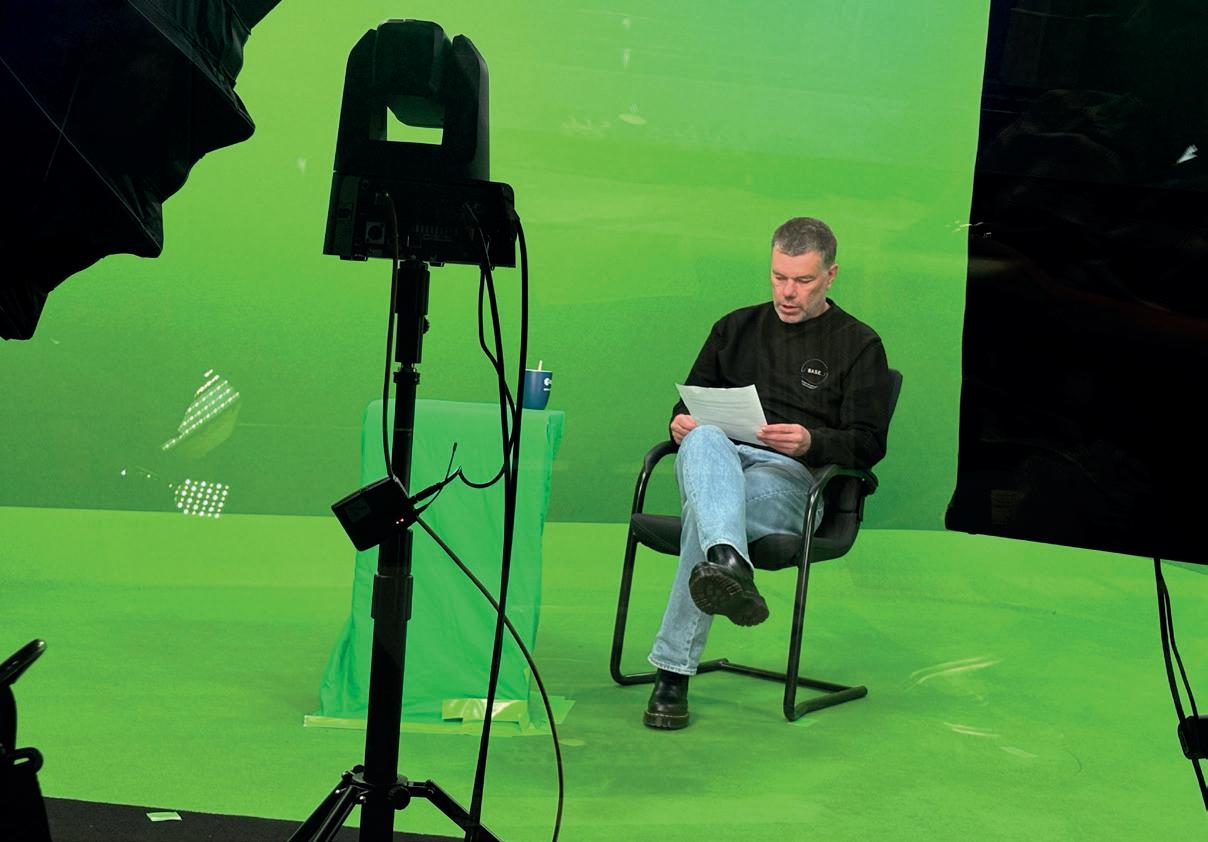
resources and management within the HEI. All our support providers reflected on the degree of change from an institutional perspective to which they are subject which can have a negative impact on the extent to which they can plan as well as provide stability for their staff and the production cycle.
For some this has meant almost annual shifts in priorities and operational structure. Such changes leave little time for real growth and development as the support provider is often in a constant state of uncertainty. It is worth noting that support providers consider themselves to be subject to such change far more frequently than faculties and other HEI services and departments.
There is an inevitable tension between decentralised and centralised services, with academics generally preferring the shortest possible distance between themselves and the people who can help them in their production as reported by WUR/EM. All of our support providers operate as centralised services although there are some variations largely due to historical factors such as the connection FAU/ILI has with the Humanities Faculty, the position of KU Leuven/CCS as part of the Leuven Learning Lab and UPV/ MU’s position within IT services.
All of our partners agree on the importance of the first contact with academic teaching staff member(s). Called often the ‘Intake process’, how this is managed is really important in determining the quality of the interaction and cooperation amongst those involved in developing the chosen multimedia output. For many of the support providers involved, this process varies considerably depending on whether the request comes from an academic or team of academics who is a newcomer as opposed to a known client. With the newcomers, considerable time is given to working with the client right from the start. This generally serves two purposes. First to better understand the needs of the client, their background experience and knowledge of educational media production and their expectations. The second purpose is to share as much practical knowledge as possible and to establish a good working relationship.
Support providers are all in agreement about the need to make this process more streamlined, they suggest that this can be done by promoting a greater use of templates, adoption of a common design approach familiar to academic staff so they get to know and respect the steps that need to be taken, and the availability of a good bank of examples from which to choose. WUR/EM mentioned the importance of adopting a well-designed set of predefined services with specified and agreed workflows. For several like UPV/MU and WUR/EM, there is an established
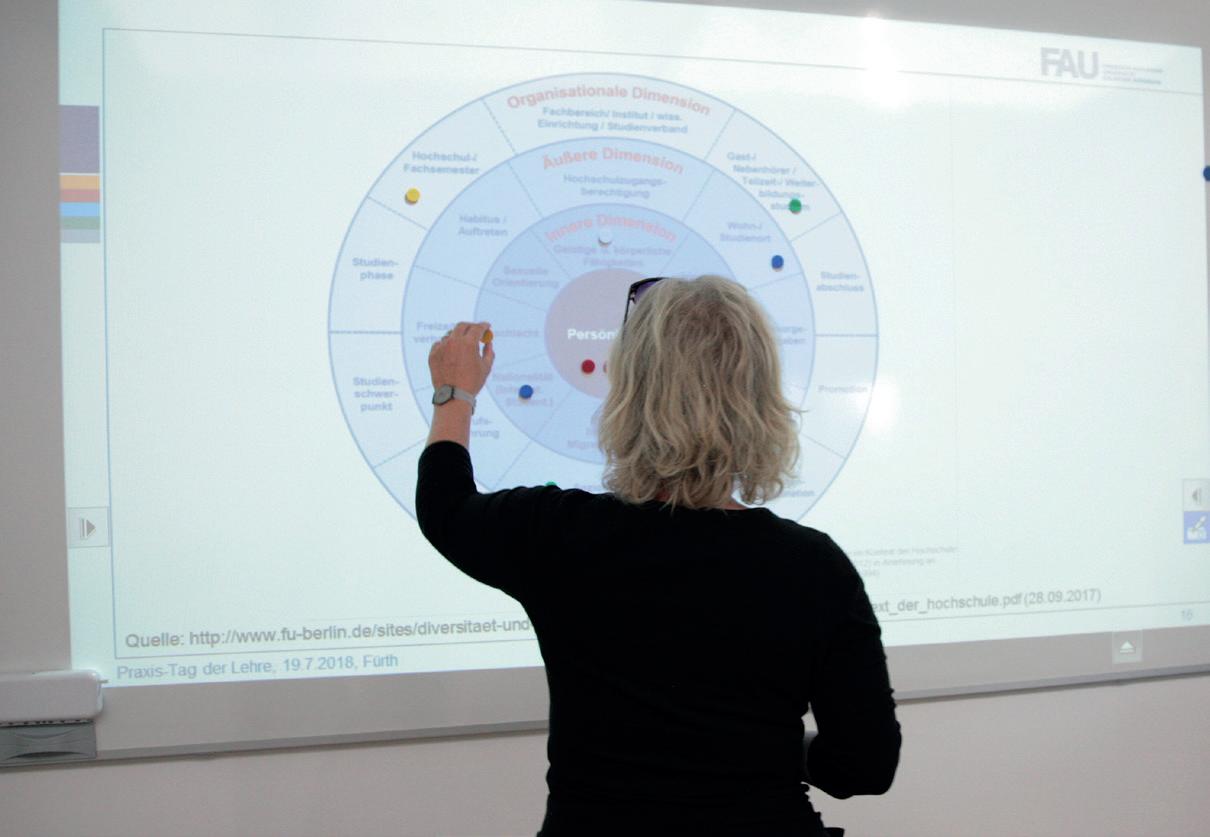
MOOC design process which is increasingly streamlined and therefore generally viewed as more efficient.
When it comes to fostering good relations with academic teaching staff, UPV/MU highlight the importance of being honest from the start, identifying what can and cannot be supported. WUR/EM mentioned the value the intake process can bring in terms of adjusting the initial plans of the academic, sometimes in quite a fundamental manner, in order to produce a much more suitable outcome. They also highlight the value of starting small to demonstrate added educational value before moving on to up-scale a specific solution.
All support providers strive towards the development of a genuine co-creation process in the production of educational media but agree that this can be challenging. Several like FAU/ILI, emphasise the need to adopt a partnership rather than a service model. Involvement of students in the process can be of help, WUR/EM refer to the value of involving Masters’ students while KU Leuven/CCS directly support the payment of students in development process which can help. The development of a specific framework to support the co-development process by the TransACTION! project is agreed to be of real value in this respect, but it is often very challenging to truly implement this process, due to the expectations of academic teaching staff and a lack of resources and, specifically, time. KU Leuven/CCS and FAU/ILI organise specific training and support actions to develop academic staff awareness and appreciation of the value of cocreation as a production process but it’s clear there is still some way to go in this respect.
One of the factors that can impact the success of a cocreative production approach is the extent to which team members know and appreciate the skills and knowledge of different members of the team. Several support providers report that this is gradually improving according as roles such as educational technologist and instructional designer become more commonplace in HEIs. There is also a shift noted from an emphasis on purely technical
skills and competences amongst the staff employed, to the greater importance of facilitation and good team-working skills.
When it comes to maximising cooperation with academic teaching staff, all of our support providers reported on the value such a good cooperation can bring but also how challenging its can be. Empathy was mentioned several times as being important as well as the ability to listen and adapt to the needs of the academic rather than relying simply on familiar production practices.
WUR/EM highlighted the need to change the conversation to emphasise the fact that media related competences are necessary for all – including students. It’s also important to emphasise the fact that educational media cannot in anyway be seen as a replacement for good teaching practice in order to allay any fears on the part of teaching staff of being replaced in some way by technology. While on the one hand, the role of the support provider is often seen as being a way to ‘unburden educators’ this can be in conflict with the final decision-making process when it comes to deciding whether a specific output is acceptable or not. This calls on support providers to strike a delicate bal-ance in terms of resource use between making teaching staff more autonomous when it comes to production and supporting them even when many would simply prefer to handover the production process to the support provider. WUR/EM highlights the importance of challenging as well
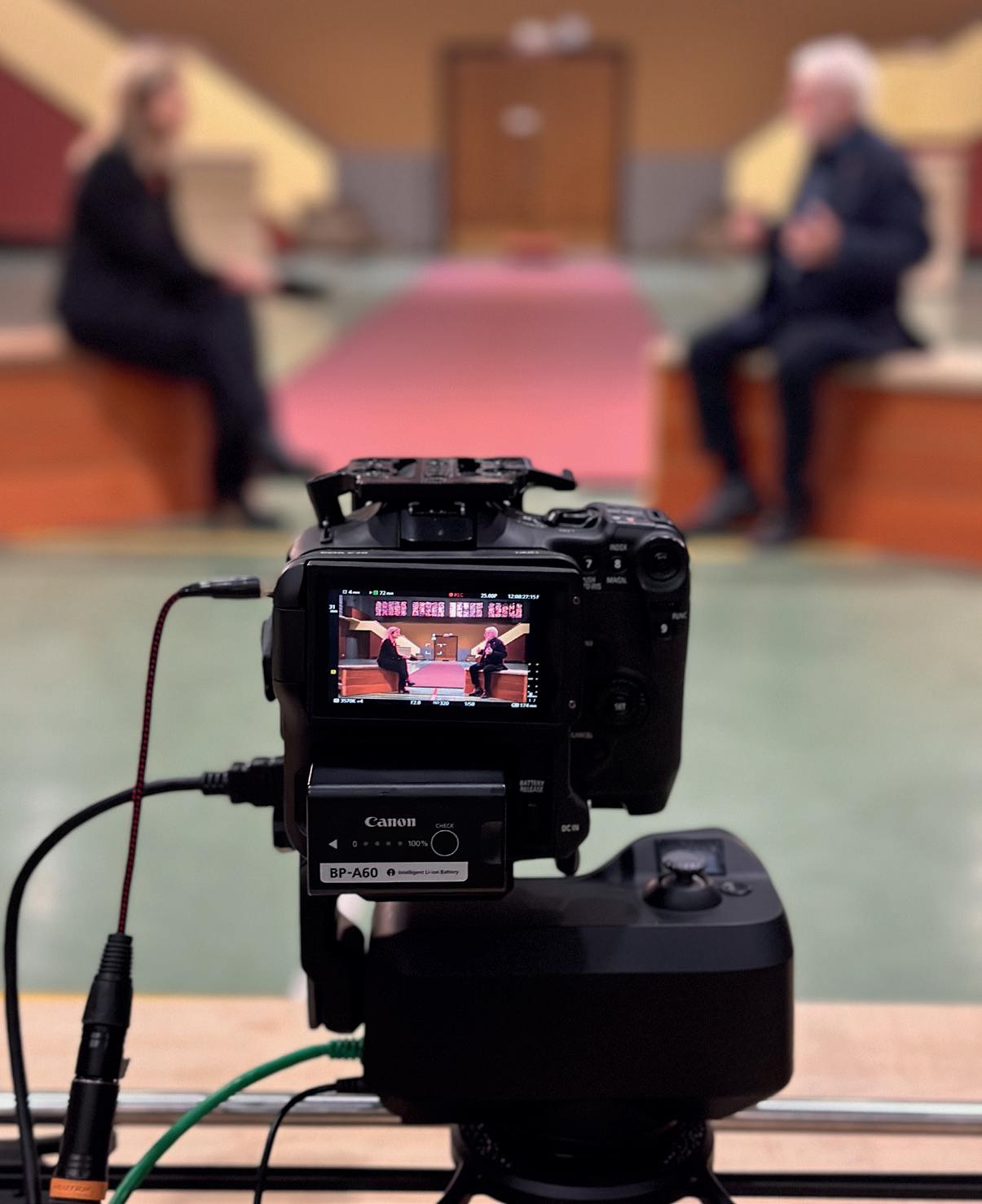
as supporting academic teaching staff, according to the WUR/EM team ‘we have to dare them to dream!’
A further area of collaboration worth highlighting relates to the ways in which the support provider relates to other relevant services in their own HEI. For most, like WUR/ EM, KU Leuven CCS and UPV/MU, this is relatively easy to achieve, given the structure of their unit. However, it’s worth noting the value that can be gained by ensuring close ties with such services, particularly when there are changes underway such as those reported on by WUR/EM when a new team of study officers joined the overall Teaching and Learning Centre. WUR/EM found that engagement with this team to be of real value. The same proved true for UPV/MU who are working more and more with the team leading on UPV’s LMS and helping to steer them towards a greater use of animation. Changes in FAU are leading FAU/ ILI to work closer with the team responsible for lecture capture, which again brings significant value.
Looking at the profiles of those working in the support providers investigated, the range of staff profiles is very broad, varying from those with more of a technical dominance to those with more of a didactic profile. It is clear that there is no one single structure and set of profiles that can be used as a blueprint for a successful support provider in a HEI setting and that the makeup of different profiles and competence sets varies considerably depending on the setting and circumstances of each HEI. This can sometimes have more to do with historical factors than current needs. What is important is the extent to which dialogue is possible and how the support provider fosters a mutual appreciation of the skills and contributions of all.
In this respect, it was generally agreed that teams working in support provider units need to be both multidisciplinary and interdisciplinary in that they not only need to draw on their own individual disciplinary knowledge, but they also need to integrate and really synthesise knowledge and methods from different disciplines, and this is before they start to work with academic teaching staff!
Good and transparent management is reported on by all support providers as being of vital importance within our centres in much the same way as in all HEI departments. However, support providers report that due to the changing position and constant state of flux in which many of them operate, it is not always easy to maintain high standards in this respect as managers often find themselves overly concerned with defending resources and addressing organisational and structural questions which takes from the time and effort that they can put into

the day-to-day management of their unit. The positioning of senior management from the support provider in the overall hierarchy of the HEI is also really important and can have a direct impact on the type and quality of the support provided.
Furthermore WUR/EM pointed out the importance of considering aspects of effective adult learning when it comes to the development of the skills and competences of staff working within the support provider. Staff need to have access to suitable learning opportunities for themselves, be motivated and given the time to learn in suitable adult learning settings. This can take the form of building into the system regular, and adequate, learning opportunities for attending courses, conferences and workshops on and off campus as well as instilling a healthy regard to the idea of up-skilling and being responsible for one’s own lifelong learning. Such an approach can really help with fostering genuine interdisciplinarity and helping staff adjust their mindset and practices away from what sadly in the past has often been referred to as a ‘silo’ mentality.
The make-up of the teams in the different support providers varies greatly, but there are certainly aspects of good practice that we agree are worth highlighting from our research. These include the inclusion of researchers within the FAU/ILI set-up, the clear structuring of WUR/EM and KU Leuven/CCS within the larger and very transparent structures of the Teaching and Learning Centre in WUR and Leuven Learning Lab in KU Leuven and the very specific role and placement of UPV/MU within IT services in UPV.
Furthermore, the importance of ensuring new colleagues are well briefed from the start on the importance of collaboration was agreed to be really important as well as providing opportunities for production teams to review their efforts in this respect in the post-production phase to better understand how to improve.
As mentioned earlier, it’s important to consider the role of students in the educational media production process. In some of the support providers, students play a significant role, in the case of WUR/EM these are usually Masters’ students. Not only is this a source of significant practical
support in many HEIs, but this also provides such students often studying the same content as the subject of the production with a really relevant opportunity to bring in the important student voice to the development. Support providers report on the value this can bring, particularly to the co-production process. There is also a further value in making the most out of student involvement in the production process which relates to the students own learning in respect to effective content development, one which many students can then apply in their later careers.
All support providers report on an ever-increasing level of DIY type productions within their institutions and are all keen to support this process in different ways. Given the improvements that have taken place in respect to equipment, this is hardly surprising when practices like green screen recording are increasingly possible in different settings including the home. Most provide an equipment lending service and some, like KU Leuven/CCS, offer direct training in how to record at home. Several operate selfrecording facilities and studios where academics can go to record simple knowledge clips and similar.
Training in DIY is also offered by most support providers, and all agree that such training is vitally important and needs to be expanded to meet demand. There can be a conflict in terms of the extent to which academic teaching staff recognise their need for training and eventual feedback. For some support providers, like KU Leuven/ CCS, the lending service plays an additional role when equipment is both collected and returned. These moments provide useful informal learning opportunities whereby staff in the support provider can provide advice and input on an individual basis to academic teaching staff. All agree that training in DIY needs as widespread promotion and support as possible, particularly for those teaching staff who are reluctant to produce their own materials for different reasons.
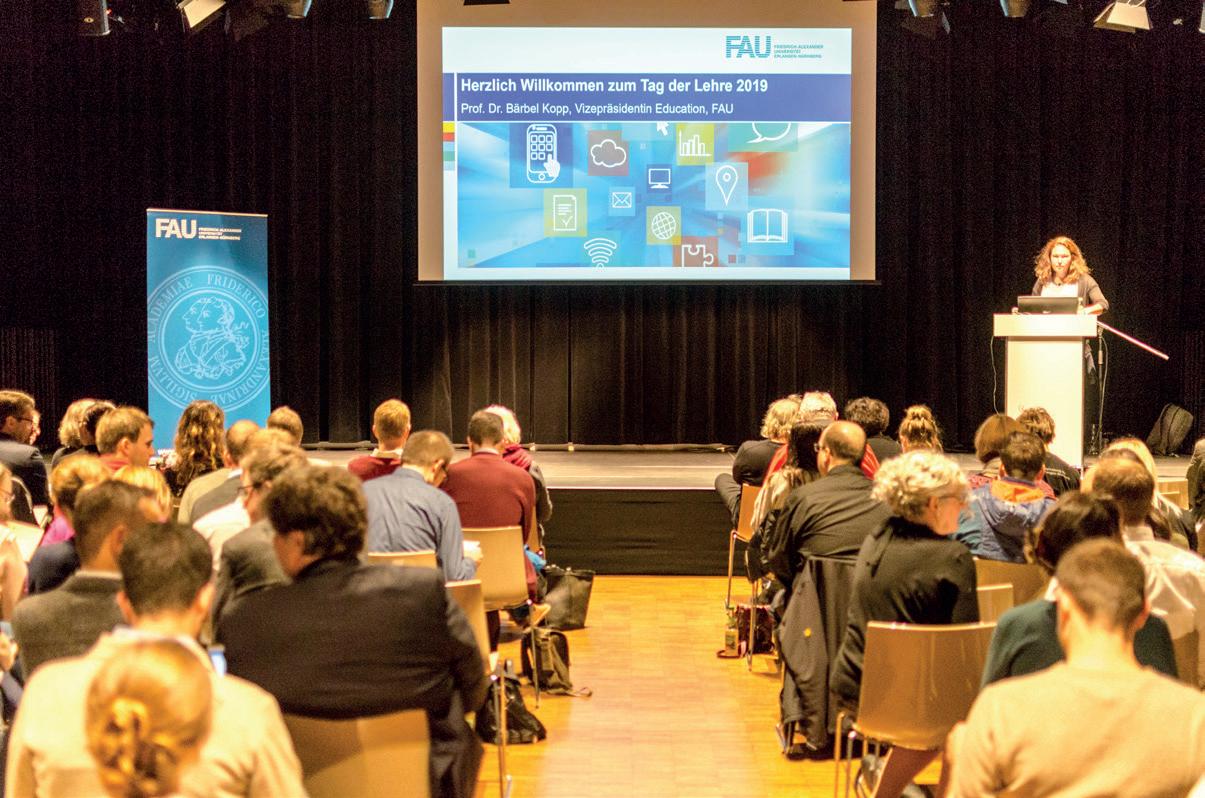
Several of the support providers interviewed are directly responsible for lecture recording while others are part of a larger service wherein a different unit takes care of lecture capture. For everyone it continues to be an important element in the educational media portfolio and one which consumes a considerable level of resources.

All agreed on the importance of maximising the value of lecture recording by carrying out more research on increasing effectiveness as well as enhancing the technical sophistication of lecture services to provide a significant level of automation. AI is playing an increasingly important role in this regard.
Podcasts and audio recording generally is also of everincreasing importance to most of the support providers interviewed. Several now offer training as well as facilities and equipment to support those who want to create podcasts as part of their course offer. The use of audio is increasingly seen as an important tool in course providers efforts to provide more user-friendly and stress-resilient options for learning and this is reflected in the formats offered by the support providers.
Blended learning formats continue to be popular and FAU/ILI report that students are demanding such formats more and more. They also report a heightened interest in flipped classroom approaches by academic teaching staff.
AI is referred to by all support providers as more and more AI-based tools and services become commonplace in production settings. This can bring significant value. UPV/ MU for example refer to the fact that avatars can be used by teaching staff to overcome the natural reluctance many of them share to record themselves. While recognising the importance of authenticity, advances in voice simulation have now made the use of simulated voice much more acceptable. WUR/EM point to the value of creating digital
twins for different learning settings. AI can also be of significant help when it comes to ensuring accessibility through automatic transcription and indexing images on screen for example.
The drive towards immersive formats and an increase in the use of XR in learning is certainly reflected in the formats offered by the support providers with several already offering recordings in 360°. However, all report that they are still at the very early stages of offering support in such production formats. Unlike the ever-increasing use and reliance on AI tools and services in educational media production, which is reported on by all those interviewed, the move to immersion is much less incremental. Such a move requires significant investment in staff recruitment, staff training and facilities which is still not available although there are some concrete plans in place in several provid-ers including FAU/ILI.
It is also worth noting as pointed out by one of the support
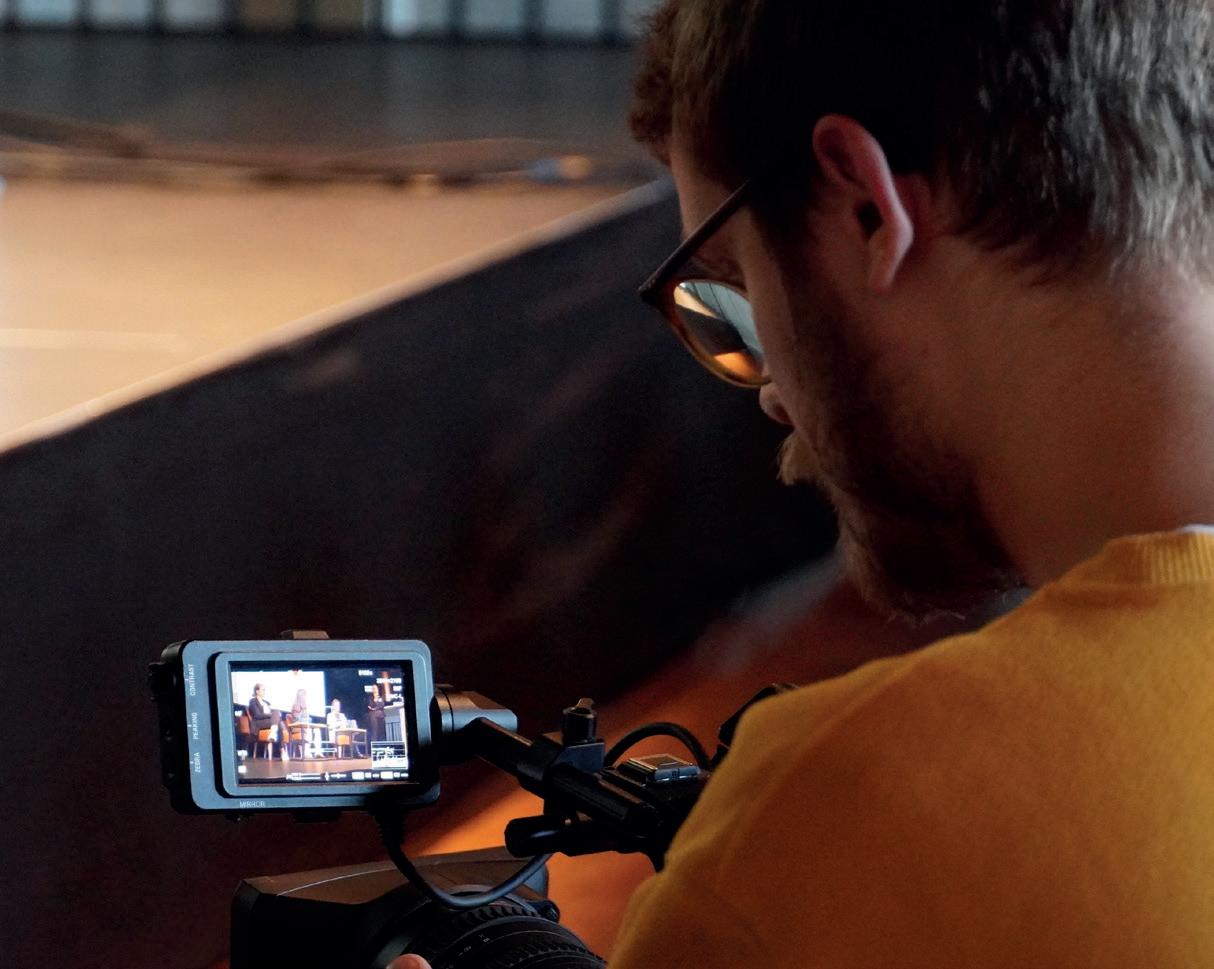
providers interviewed, that always pushing forward to showcase the latest equipment and most innovative formats can also have its drawbacks. Not only can this raise concerns from others in the institution about the priorities of the support provider and may even raise a detrimental level of institutional jealousy, but it can also distract the support provider from its core mission of supporting better learning.
Firmly focussing on the added pedagogical value that any new format can bring and being ruthless in the selection of new tools and services is clearly the way to go.
Storage can be a challenge and is increasingly being viewed in terms of its environmental impact. All support providers report on differing policies across their institution and indicate that a review of policy is required particularly when it comes to storage of particularly large volumes,
e.g. of 360° recordings. This aspect is also influenced by ownership, for most support providers, ownership of a particular production remains with the HEI while in UPV, teaching staff are in effect the owners of any materials they produce.
The models to fund the production process vary considerably across the support providers interviewed. Some operate an internal market model whereby the faculty pays for the work carried out from internal funding while in others, budgets for individual productions are less important and availability of services is more driven by demand and available time and resources. UPV/MU staff are involved in a system in their HEI by which they are part of a commission which helps select good production proposals from faculty members as part of a competitive process providing the resources to those successful for the production which works very well.
When it comes to DIY, equipment and use of selfproduction studios is offered freely to academic teaching staff, and budgets to cover these costs are often more easily found than resources to cover staff costs in the support providers themselves.
Media asset management for the HEI is considered by WUR/EM to be an area of increasing concern for all support providers. Given the wealth of media resources created and maintained by the provider as well as those that are directly purchased for a specific production, the exploitation of such assets in an economically manner is an important aspect of their work.
The main legal consideration faced by support providers relates to copyright and all offer guidelines to academic teaching staff on this aspect of their production. However, it is not always clear who in an individual HEI is responsible for ensuring that any final output conforms to all copyright regulations. Most support providers are keen proponents of Creative Commons licensing practices where possible.
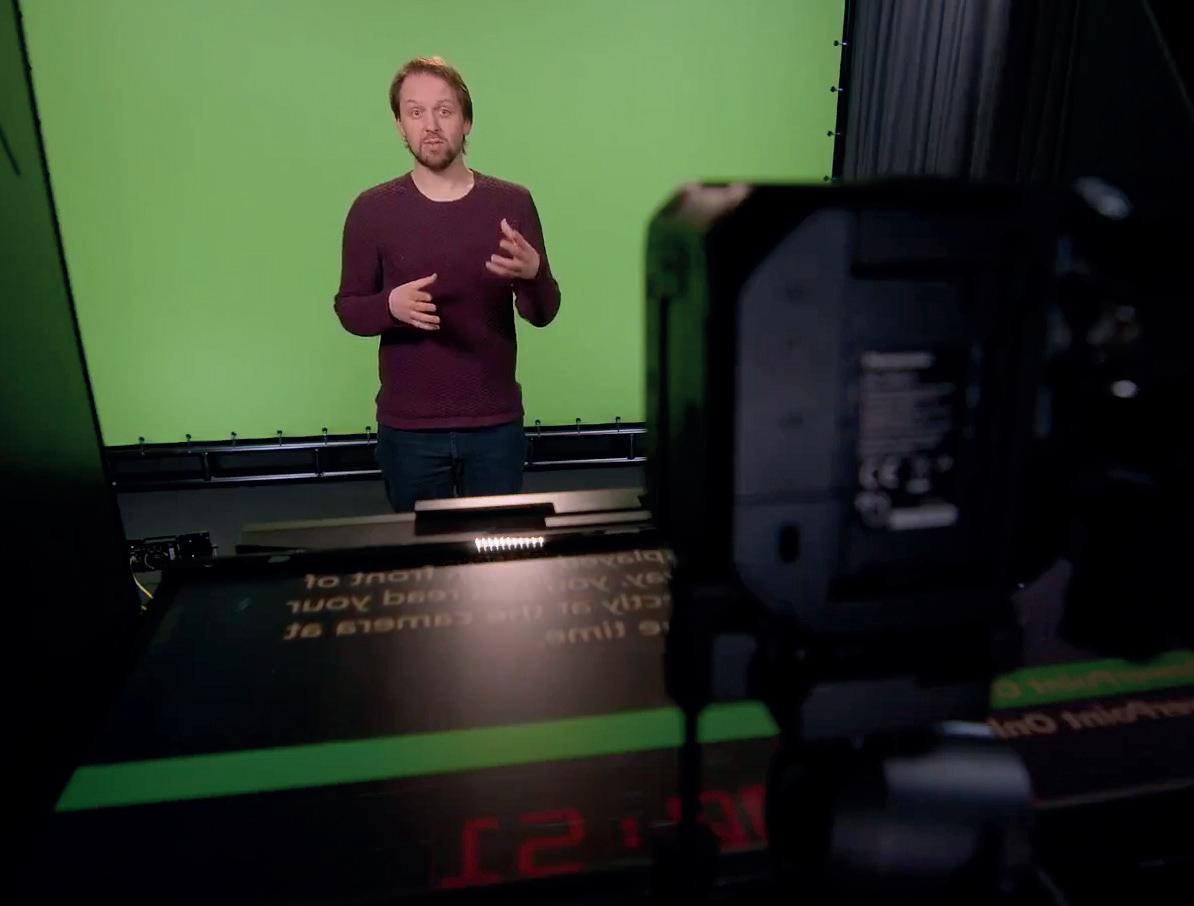
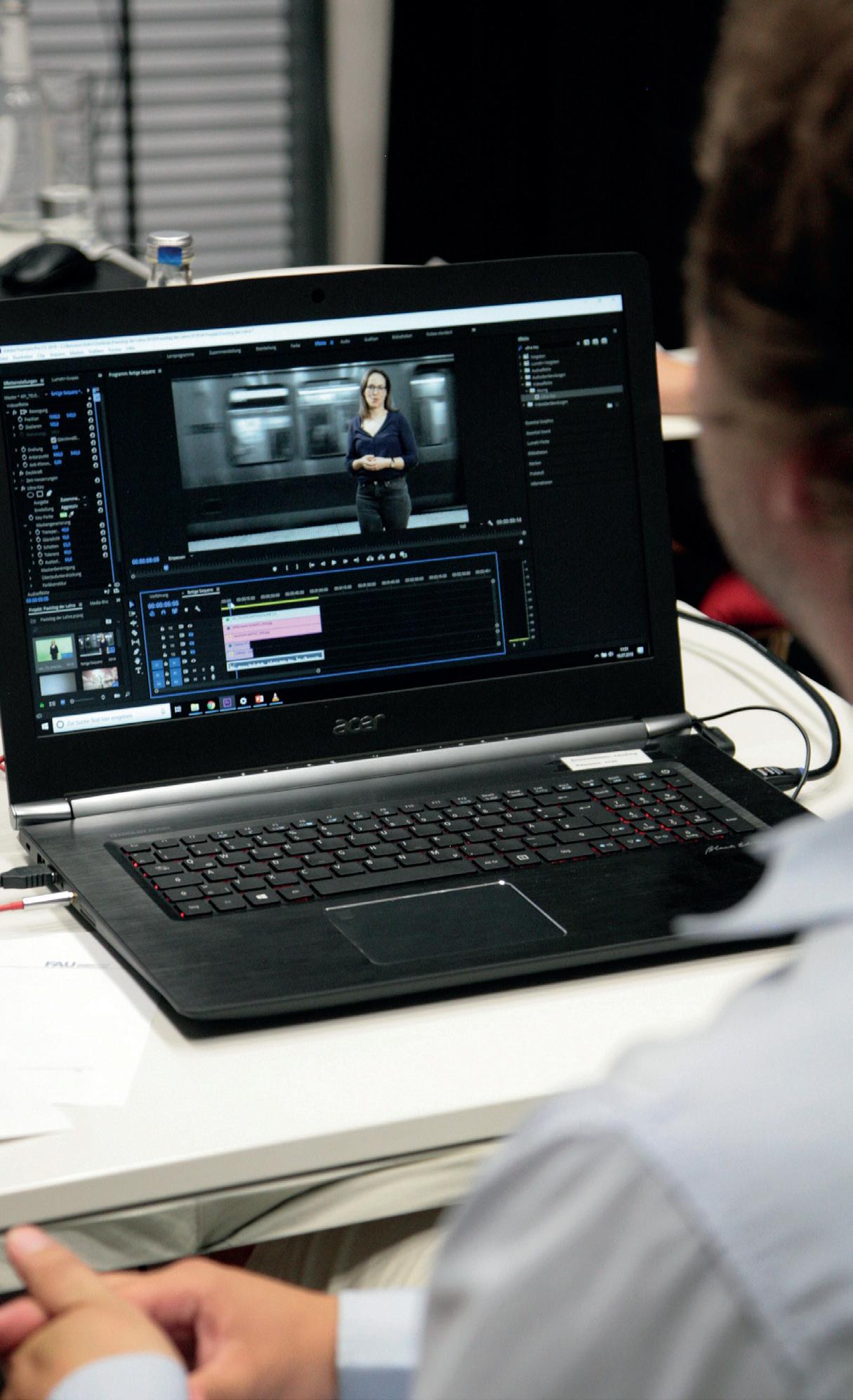
All support providers report on a general tightening of budgets and it is becoming increasingly difficult to ensure the ongoing provision of their services with several, including WUR/EM, reporting on staff cutbacks. This reflects an attitude, common to many HEIs, that support providers were given ample resources to boost their services during the pandemic and that now, they need to cutback.
Evaluation of educational media outputs continues to be a significant challenge for practically all the support providers, and this applies to both their own productions as well as evaluating the results of materials produced by teaching staff themselves using a DIY model. It’s important to point out that such evaluation goes beyond technical evaluation such as an assessment of the quality of the sound and image which is the level that is generally expected of the support provider. The support providers interviewed aim much more at an evaluation of the added value educational media can bring to a learning opportunity and the extent to which it meets the pedagogical goals.
Most evaluation of course output takes place at the level of the overall course and rarely involves support provider staff, while all report an ever-increasing desire to put in place effective evaluation strategies to measure the impact of the course components for which they are responsible. For several this includes being able to carry out direct research into the effectiveness of their work, some-thing which rarely happens at the moment.
UPV/MU carries out some basic analysis by recording the numbers of lecture capture views and sometimes are involved in research activities regarding effectiveness of a specific course, but this is not commonplace in UPV. WUR/EM is engaging more on this topic by including questions into the final assessment of a course about the educational media components or by setting up small focus groups.
WUR/EM is also actively researching their use of lecture capture by surveying both educators and students on their use of lecture capture and are pairing this information with their analytics. KU Leuven/CCS deliberately don’t engage in quality control, preferring to provide support and training where possible and to promote good quality by good examples. While they do offer formal feedback on scripts, feedback is usually provided in non-formal settings. All support providers agree on the value of engaging them more directly in course evaluation.
All support providers report that their outputs are as accessible as possible in accordance with the policy of their HEI. However, for most this involves simply providing transcriptions where possible and subtitling as required and it was generally agreed, that this is an area going forward which requires more attention. It is clear from our investigation, that for most HEIs, accessibility is approached in rather a minimalistic manner, making sure that while accessibility guidelines are followed, no extra effort is required unless specifically requested for individual cases. Lack of resources is also a factor in this regard, as most support providers work with limited budgets which often rule out the possibility of introducing services and support to enhance accessibility.
The extent to which the support providers that we interviewed collaborate with other HEIs varies considerably and has much to do with historical factors as well as more practical aspects like language. FAU/ILI collaborates to a significant amount with other HEIs in the region through the structure of the Bavarian Virtual University
where established practices in relation to the sharing of resources have been in place for several years
Both WUR/EM and KU Leuven/CCS see the possibilities particularly since they are producing more and more resources in English while UPV/MU also see the possibilities of exploiting opportunities in the Spanish-speaking world due to their close ties with Spanish-speaking HEIs.
Joint productions are however seen as a significant challenge due to the different ways of working and most
support providers do not experience any great demand for such productions. Further considerations related to ownership rights and differing opinions about suitability of specific productions also plays a role here. Some like WUR/ EM still produce resources for external agencies and HEIs but this is decreasing in recent years while KU Leuven/ CCS do see this as an area for development and point to the European Universities Initiative of the European Commission as possibly providing a good context for such collaboration.

In the following chapter we provide a short list of clear and actionable policy recommendations for Higher Education Institutions (HEIs) in relation to several key areas based on the findings of our work within TransACTION!
We begin with a set of recommendations related to the position of support providers within their overall HEI setting. These are aimed at senior decision-makers within the HEI as well as the European Commission and national ministries and agencies responsible for driving innovation policy and the digital agenda within (higher) education. This first set of recommendations formed the basis of a position paper submitted by the Media & Learning Association on behalf of its members which includes all the TransACTION! partners in September 2024 to the European Commission as part of their review of the Digital Education Action Plan 2021–20271. The recommendations that follow are aimed more at the operation and practices of such support providers.
• Senior staff from the support provider should be more directly involved in the decision-making processes of their own HEI. In this way they can make a valuable contribution to the overall goals of the HEI when it comes to digital innovation.
• Support providers should be encouraged to carry out their own collaborative research into the most effective ways in which digital media can be used to support learning. Their findings should be used to steer policy discussions regarding best pedagogical use of media.
• Support providers should be allocated adequate resources to support the training, equipment and facilities requirements of academic teaching staff in creating their own high quality educational media resources.
• The training and professionalisation of educational media producers requires a more cohesive approach in terms of certification through the introduction of common certification and training standards at National and European level.
1 https://education.ec.europa.eu/focus-topics/digital-education/action-plan
• Support planning needs to be as stable as possible, with established mid- and long-term plans in keeping with the overall innovation planning for the HEI.
• Ensure the steady and reliable provision of resources to match the staff and equipment requirements of the support provider. This should reflect the overall plans of the HEI including a plan for the future in respect to emerging technologies.
• HEIs should promote as co-creative a process as possible when it comes to course creation, involving and respecting the different expertise available.
• Support providers should be supported to consider the ethical and most efficient use of reliable AI tools to enhance the educational media production process. They should also be given opportunities to share their results with other stakeholders in the wider European context.
• Support providers should play as significant a role as possible in supporting students become sufficiently literate in the effective use of different digital mediabased tools and resources. This should be reflected in the resources that they use and the learning opportunities with which they are faced.
• Consider establishing a system whereby academic teaching staff are given credits recognising their media production/development skills which have meaningful value in terms of career advancement.
• Foster an agile approach in the structure of the support provider. This approach should include ample opportunities for staff development in keeping with the rapidly evolving educational media context.
• Build in lifelong learning opportunities for staff to ensure they are in a position to regularly update their skills and competences.
• When choosing to adopt new and advanced formats such as those supporting immersive learning, the support provider needs to have a sound strategy in place for such developments and appropriate levels of funding.
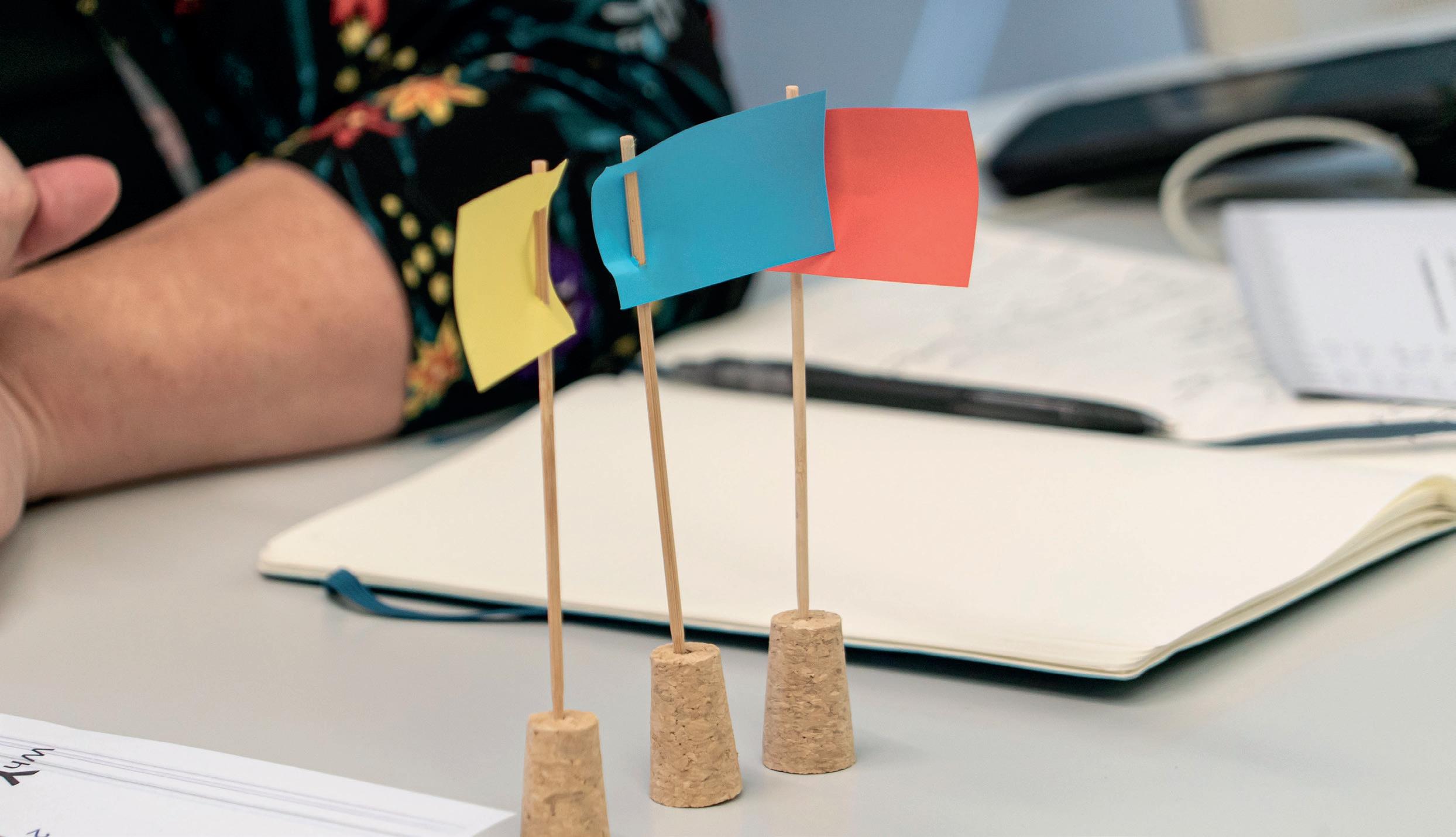
• Ensure the shortest possible connection between the support provider and academic teaching staff by effective networking and resource allocation with faculties.
• The structure of the support provider should operate in as interdisciplinary a manner as possible in keeping with the rapidly evolving educational media context.
• Take into account the fact that students nowadays expect a considerable amount of multimedia in any course that they take and plan accordingly in terms of service provision.
• New teaching staff should be given adequate opportunity to enhance their own skills in educational media production right from the start, understanding when they can and should reply on their own skills and when they need help.
• Put in place resources and opportunities for support providers to carry out evidence-based research into the effectiveness of different formats and approaches.
• Students themselves in their future careers need to be media literate in the effective use of different tools and resources. This needs to be reflected in the resources that they use and the learning opportunities with which they are faced.
regarding design, production and format of educational media aimed at support providers
• Put sufficient resources into training, equipment and facilities to support the DIY process for academics which includes adequate coaching and follow up to ensure high quality.
• Aim as much as possible for a co-creative process when it comes to joint productions involving and respecting the different staff members involved.
• Consider the ethical and efficient use of reliable AI tools to enhance the educational media production process in general and avoid adopting new AI tools and services solely on their novelty basis.
• When choosing to adopt new and advanced formats such as those supporting immersive learning opportunities, ensure there is a sound strategy in place for the development and appropriate funding of such formats
• Only introduce new formats and approaches when convinced that there are sound pedagogical reasons for doing so.
• Aim towards more harmonised use of terminology, particularly when it comes to occupations, format types and production methodologies.
• Support providers should involve students as much as possible, not only in terms of the practical help they can provide but also to ensure that educational media is closely tied to student needs and expectations.
According as the TransACTION! project comes to an end in 2024, we plan to engage in a significant round of dissemination activities to promote our results as widely as possible.
The outputs of this report will be promoted widely, starting from the use of the recommendations contained in this report to underpin a submission being made to the European Commission in response to the call for inputs to the EC review of the Digital Education Action Plan.
Other planned actions include:
• Production and wide circulation of a two-page summary with main recommendations and findings –mainly aimed at support providers and HEI managers and policy makers.
• Extensive promotion of the TransACTION! online course which will be supported for 2 years (2025–2026) and hosted on the MLA Training academy.
• Maintenance and promotion of the Resources Hub which will continue to be supported on the MLA website for the foreseeable future.
• Promotion through channels including those of the partners and specifically those of the Media & Learning Association.
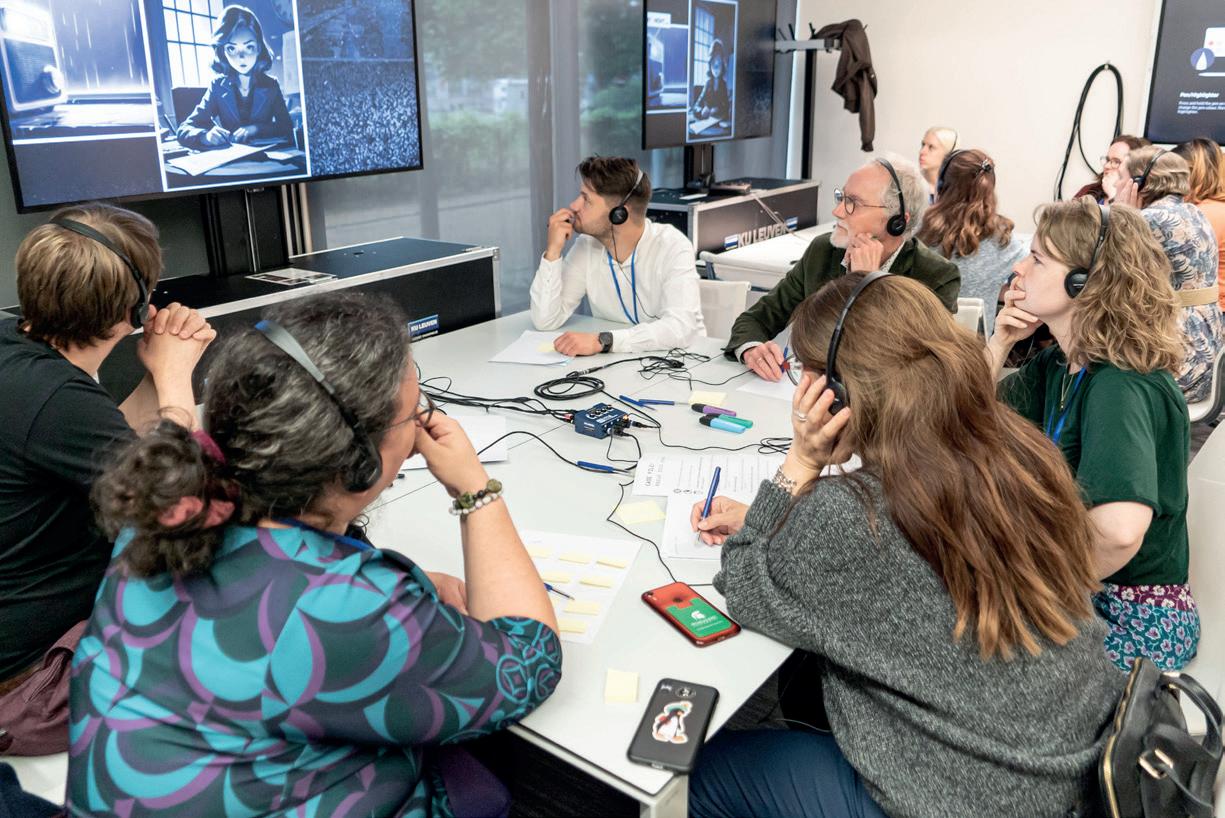
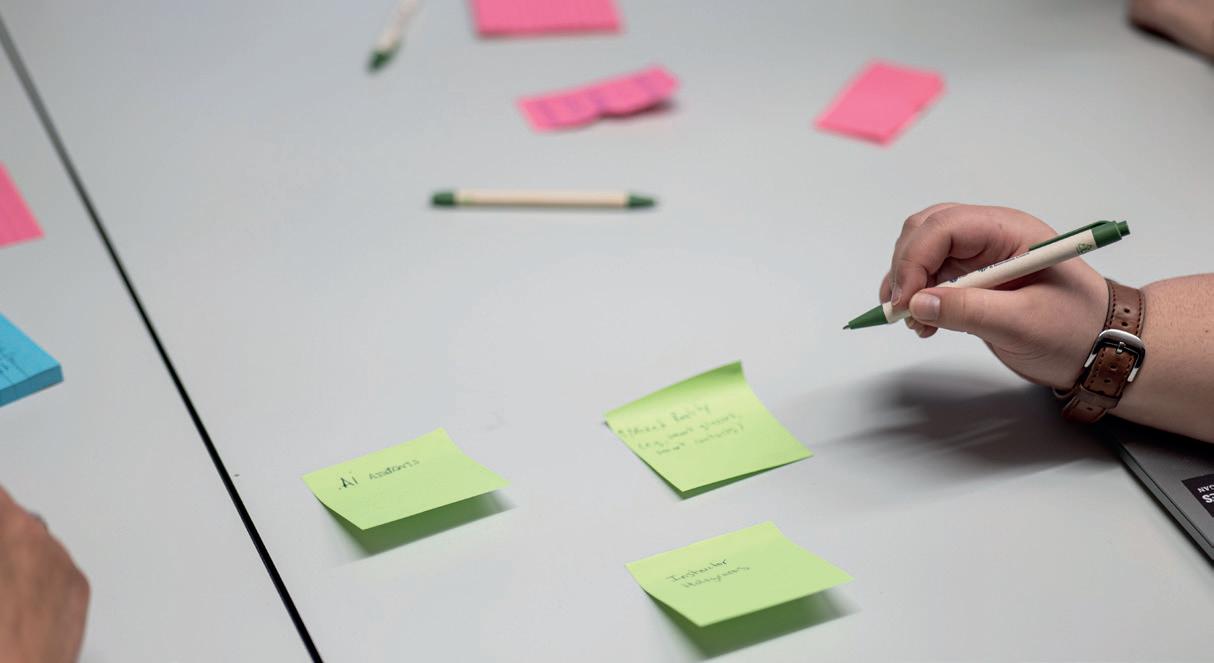
While it is not possible to accurately predict the impact this effort can have, the project team are confident that the production of this report will be of real interest to a variety of different HEI staff and policy makers by highlighting the current status and concerns of those responsible for educational media production.
The expected benefits of our work reflect directly those targeted in our initial project proposal in that we expect our efforts to result in:
• Enhanced student engagement and learning outcomes
• Broader access to educational opportunities
• Increased innovation in digital teaching and learning practices
• Promotion of high-quality media production for educational purposes
• European organisations taking a leading role in a globalised HE world
In this report we have invested considerable effort into investigating the current status of the support providers who are partners in the TransACTION! Project. Although there are just four of them in four different member states, we believe that they reflect the situation of many such centres in Europe. We carried out our investigation in different ways which were supported by the fact that the partnership involved has already a significant history of effective collaboration at this stage of the project lifetime, there have been many formal as well as informal opportunities for discussions as well as opportunities to visit one another’s facilities.
We have tried to distil the many inputs to this process into a highly abridged main section of the report where we reported on the way in which these providers work under several broad categories. Based on this effort and further consultation with the partners, we then distilled their inputs down to what we hope are a set of clear and succinct recommendations for others interested in maximising the value and impact such providers can have regardless of their specific status or role in the HEI.
In our conclusion, we would like to reiterate our strong belief that centres such as the ones described in this report are at the forefront of the battle to innovate higher education and to drive it towards a far more student-centred and future-oriented position than it is today. Those responsible for educational media production in our HEIs can make a genuine difference and when well-supported and operating to the best of their abilities, have a very significant role to play.
We hope that by providing a short description of how they work, elaborating on the challenges they face and recommending as to how they might better function, we have taken at least a small step in helping them toward achieving their full potential.
Thank you for reading our report.


Back: Miranda van der Loo (WUR), Sally Reynold (MLA), Evert Binnard (KU Leuven), Tim van Scholl (WUR), Soledad Valero Cuba (UPV)
Middle: Jesse Hulsbeck (WUR), Pim van Scholl (WUR), Isabella Dobler (FAU), Hanne Tollenaere (KU Leuven), Anke Pesch (KU Leuven), Sónia Hetzner (FAU), Carlos Turró Ribalta (UPV), Nacho Coll Vásquez
Front: Dovile Dudenaite (MLA)
Title: © KU Leuven/CCS
Page 8: © FAU/ILI
Page 10/11: © FAU/ILI
Page 12/13: © WUR/EM
Page 14/15: © UPV/MU
Page 16/17: © KU Leuven/CCS
Page 18: © WUR/EM
Page 19: © FAU/ILI
Page 20: © KU Leuven/CCS
Page 21: © FAU/ILI
Page 21: © KU Leuven/CCS, © FAU/ILI
Page 23: © WUR/EM
Page 24: © FAU/ILI
Page 25: © UPV/MU
Page 27: © Media & Learning Association
Page 28/29: © Media & Learning Association
Page 30: © Media & Learning Association